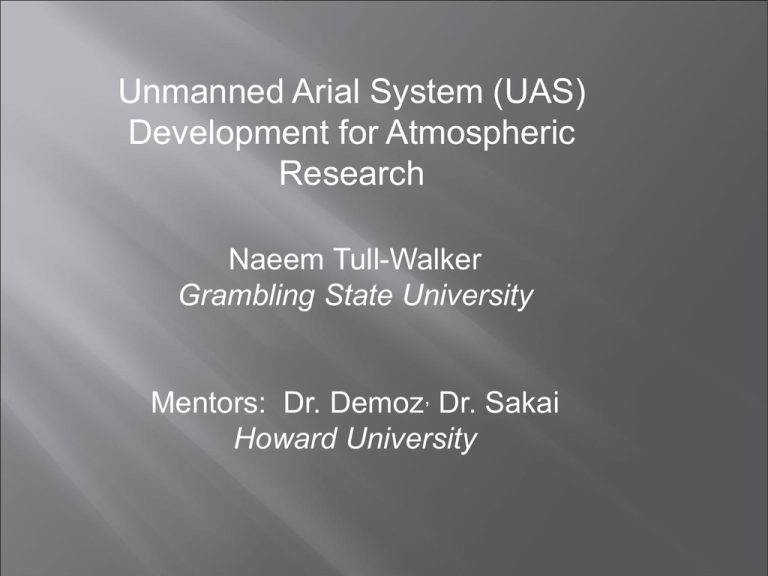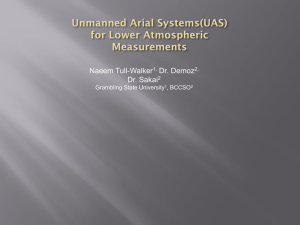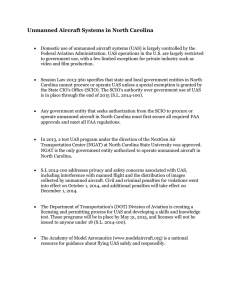Final 7/31/14 presentation
advertisement

Unmanned Arial System (UAS) Development for Atmospheric Research Naeem Tull-Walker Grambling State University Mentors: Dr. Demoz, Dr. Sakai Howard University Goal: introduce new platform for sensing at Beltsville - unmanned aerial systems (UAS) humidity sensors, small aerosol samplers, for vertical profiling activities emerging technology development for NOAA. Other platforms for calibration: tethered balloons, tower various drones Kites Overall goal of the project Tethered balloon The goal is to be able to operate instrumented copter in tandem with a tethered balloon and tower. Balloon payload Once calibration is satisfied, the copter will be operated solo at other places. Tower payload Flux tower REU research Objective Operation of the copter : Current state of the instrument. Task: learn to fly and control the vertical sounding units. Flight Simulator loaded and ready for practice. play with the simulator and learn the controls REU research Objective Payload design : Current state of the instrument (see photo). Task: Need to design a light weight packageing. Study and document the components help with designing this into a stairoform packaging unit that can get attached to a copter. Battery RaspberryPI REU research Objective Data analysis This package is being is loaded in Dr. Sakai’s car and travel’s with from Beltsvillehome and back. Data (T/RH, Pressure/GPS) is collected. Task: Use Google earth to visualize Help with data coding. REU research Objective Data analysis This package is also operated side-by-side with other sensors in Beltsville. Task: Assess the quality of the Meteorological sensors. Help with data coding and statistics. Summary of Tasks Instrumentation: •Sonic set up •T/RH Calibration • INS • RF communication Programming/Field • Raspberry Pi set up • Correlation of Thref data • Balloon calibration design • UAS-instrument mount “FUN” • UAS simulator/control • Test flight • • Science study design Q. What problem do you want to research? A. Focus on the Data Analaysis Aspects, learning the ins and outs of the Q-Copter , via test flights, categorization and calibrations of different instruments being used. Accurate data collection. Please visit 1) https://www.arm.gov/sites/aaf/workshop2008/1016/0845to0900Reuder.pdf 2) http://www.weatherwise.org/Archives/BackIssues/2012/March-April2012/UAVs-full.html http://www.academia.edu/2199388/A_small_unmanned_aerial_system_UAS_for_coastal_atmospheric_research_preliminary_results_from_New_Zealand ftp://ftp.rap.ucar.edu/pub/rgf/kite_profiling.pdf http://uas.noaa.gov/ http://uas.noaa.gov/director.html

